When it comes to city passes and travel cards, it’s usually fairly easy to figure out whether they would be worth it for you or not. For things like the Paris Pass or London Pass, they have a list of the most popular attractions and how much they cost, right there for you to see. The Swiss Travel Pass, however, is shrouded in mystery, or at least it was until I spent several days tracking down all of the prices and benefits.
A great many of the visitors and commenters on my popular page about where to go in Switzerland on a short visit are wondering whether the Swiss Travel Pass is a good deal. Embarrassingly, I’ve always had to answer that I found the pass too confusing to confidently advise people on. Now that has all changed, after literally days of research.
Note: This article was last updated in February, 2024.
Disclosure: This is a reader-supported website and some of the links are affiliate links where a small commission is paid to help keep this site going, but the cost to visitors is the same. The Swiss Travel Pass seems quite expensive at first, so it felt like it might be hard to get your money’s worth out of it. As it turns out, it’s pretty easy to get good value, and it’ll be a good deal for many visitors.
New in 2024
Prices increased an average of 5.9% from 2023 on the Swiss Travel Passes, but the Half Fare Card remains at CHF120, which is where it’s been for many years. Train fares in the country increased by similar percentages so the value is basically unchanged. There were no other notable changes to service or the included attractions and train routes.
>>>Buy the Swiss Travel Pass online
Where to stay in Interlaken and the Lauterbrunnen Valley
Since most people reading this will be visiting the Interlaken area and I get so many questions about it, I decided to write a detailed guide on which area to stay in while visiting this area.
>>>Where to stay in Interlaken or the Lauterbrunnen Valley in Switzerland
I included many huge photos in that post so readers will be able to get a better idea of what each place looks like and they are worth a look by itself.
>>>Lucerne or Interlaken: Which to visit and how long to stay?
The article just above will help you decide on how long to spend in each of Switzerland’s two best tourist areas.
Are you 100% sure where you want to go in Switzerland? This should help
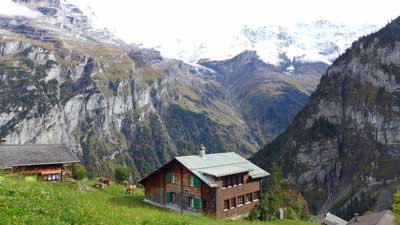
Zurich and Geneva are pleasant but dull. The good news is that Switzerland is packed with amazing sights and none of them are the big cities. If you aren’t 100% locked in yet, please read the article below and I think you’ll enjoy it.
Is the Swiss Travel Pass a good deal? Here's the short version

The bottom line is that the scenery, train journeys, and cable car rides in Switzerland are stunning and not found anywhere else in the world. They are also quite expensive if you pay for them one at a time. So no matter how you visit Switzerland, you are going to be paying quite a bit, or skipping the absolute best things that you’ve come there to see.
With good planning it’s quite easy to get great value out of a Swiss Travel Pass, but it might be a poor choice for those who don’t like to plan ahead. You can easily do a scenic train ride and a cable car in the same day, and still have time to do a scenic hike in the process.
First class or second class? Good news for most people
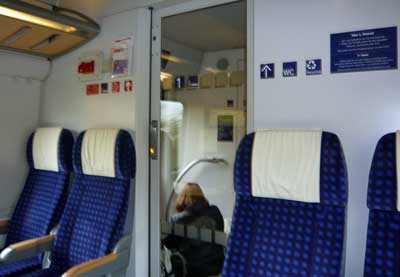
That said, Swiss Trains are literally the nicest in Europe and even the Second Class seats and carriages are nicer and roomier than trains in neighboring countries. The First Class seats are larger and nicer with only 3 across the cabin instead of 4, but honestly Second Class is perfectly comfortable for almost everyone.
Again, First Class on European trains like this is generally popular with business travelers where the company is paying and they need to get work done during the ride, and also senior citizens who don’t want to worry about a carriage full of backpackers. For most of the rest of us, Second Class is more than comfortable enough and the seat width and legroom compare to business-class airline seats. I’m a big and tall guy and I almost always travel in Second because it’s plenty comfortable enough and all the seats arrive at the same time anyway.
The longer you'll be in Switzerland, the better deal a Swiss Travel Pass will be
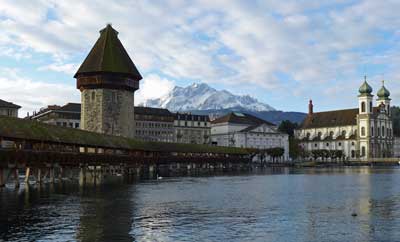
In other words, if you are staying 5 days or fewer, you have to do the math to determine your best option. But if you are spending even 6 or 7 days in Switzerland then the 6-day or 8-day Pass is almost guaranteed to be a great deal and your best choice. Once you have a Swiss Travel Pass you’ll absolutely love the ability to just hop on any train (excellent trains, always on time) and most boats and cable cars without having to worry about the cost. The per-day cost of an 8-day Pass even if you only use 6 of those days is about CHF65, and Switzerland is filled with amazing train rides and boats and cable cars that can get you that much value before noon each day.
Schilthorn (50% discount) and Jungfraujoch (25% discount) are cheaper with a Swiss Travel Pass
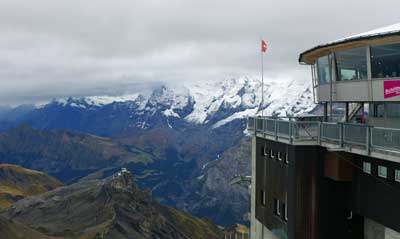
Both of those peak experiences are extraordinary and different from each other. Even so, compared to Jungfraujoch, Schilthorn is also faster and more comfortable on the way up and down. You can enjoy an excellent visit to Schilthorn in 4 hours or so (or a bit longer if you eat at the spinning Piz Gloria restaurant at the top), while a visit to Jungfraujoch requires closer to 6 hours.
NOTE: Schilthorn closes for maintenance for a week or two in late November most years.
Consider the Swiss Half-Fare Card instead
If you AREN’T going to be doing two or more of the long (and expensive) scenic train trips, you will get much better value out of the Swiss Half-Fare Card, which is explained a bit below.
Mt Rigi, near Lucerne, is 100% covered by the Swiss Travel Pass
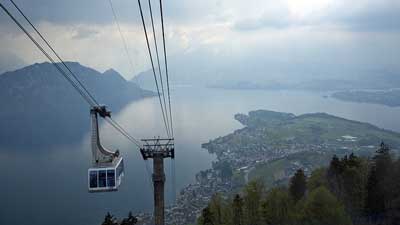
Is a Swiss Travel Pass right for you?
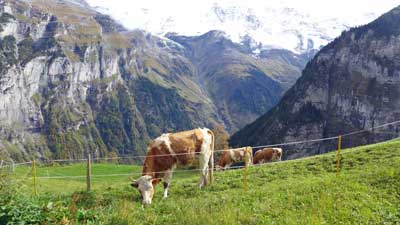
Most people only visit Switzerland for 5 or 6 days at most, so the 3-day and 4-day passes are the ones to focus on. But if you are staying for 8 days or more, those longer passes are almost certainly a great deal for you.
Long story short, if you plan on doing 2 of the more expensive scenic trains and the Jungfraujoch railway or the Schilthorn cable car, then the pass will save you money. Switzerland is expensive, but it’s worth it, and the travel pass can help make it a bit more affordable.
What the Swiss Travel Pass includes
- Free rail travel on normal trains and most scenic trains
- Discounted travel (about 50%) on popular tourist mountain trains
- Discounted travel (about 50%) on popular tourist cable cars
- Free travel on public transport in 75 towns and cities
- Free entry to around 500 museums in Switzerland
The Swiss Travel Pass covers the fare on the most popular scenic and panoramic trains. You can choose a normal seat in a regular carriage for no additional cost, but there is a supplement of CHF8 to CHF49 for a reserved seat in one of the special panorama carriages on these routes.
Prices of the 2024 Swiss Travel Pass
1st Class
- Adult 3-day Pass: CHF389
- Youth (4 to 25) 3-day Pass: 274
- Adult 4-day Pass: 469
- Youth (4 to 25) 4-day Pass: 330
- Adult 6-day Pass: 602
- Youth (4 to 25) 6-day Pass: 424
- Adult 8-day Pass: 655
- Youth (4 to 25) 8-day Pass: 469
- Adult 15-day Pass: 723
- Youth (4 to 25) 15-day Pass: 512
2nd Class
- Adult 3-day Pass: CHF244
- Youth (4 to 25) 3-day Pass: 172
- Adult 4-day Pass: 295
- Youth (16 to 25) 4-day Pass: 209
- Adult 6-day Pass: 379
- Youth (16 to 25) 6-day Pass: 268
- Adult 8-day Pass: 419
- Youth (16 to 25) 8-day Pass: 297
- Adult 15-day Pass: 459
- Youth (16 to 25) 15-day Pass: 328
Swiss Travel Pass Flex
This version costs a bit more, but you don’t have to use the travel days consecutively. It’s a great option for anyone who won’t be taking longer train rides each day.
- Adult 3 Flex days in 1 month (1st Class): CHF445
- Adult 3 Flex days in 1 month (2nd Class): 279
- Adult 4 Flex days in 1 month (1st Class): 539
- Adult 4 Flex days in 1 month (2nd Class): 339
- Adult 6 Flex days in 1 month (1st Class): 644
- Adult 6 Flex days in 1 month (2nd Class): 405
- Adult 8 Flex days in 1 month (1st Class): 697
- Adult 8 Flex days in 1 month (2nd Class): 439
- Adult 15 Flex days in 1 month (1st Class): 755
- Adult 15 Flex days in 1 month (2nd Class): 472
Where to buy the Swiss Travel Pass
The Swiss Half-Fare Card – A better option for many visitors
Far less confusing than the Swiss Travel Pass, you can instead get a Swiss Half-Fare Card, and it will be a better deal for many travelers. The price is lower and it’s much easier to do the math, and the discounts are greater on some things as well.
- Swiss Half-Fare Card for 30 days: Adults – CHF120 or US$129
What you get:
Those who buy the Swiss Half-Fare Card will get 50% discount on all trains, buses, and boats in Switzerland for up to 30 days, as well as 50% off all public transportation in 75 cities and towns.
>>>Buy the Swiss Half-Fare Card
Why the Half-Fare Card is a better deal for many
While the Swiss Travel Pass is a great deal for those doing many of the expensive scenic journeys and mountain sights within a few days, it’s not good value for those who are doing fewer of the expensive trips and/or those who are staying longer. Also, the Swiss Travel Pass only provides a 25% discount on the amazing Jungfraujoch Railway, which costs between CHF120 and CHF224 return depending on your starting point, while the Half-Fare Card provides a 50% discount.
The math is simple as well. You can just add up the cost of the trains, boats, and buses you’ll be taking while in Switzerland, and if the total is more than CHF240 or so, the Half-Fare Card will save you money.
Example itinerary:
- Zurich to Interlaken train (2nd Class): CHF50
- Schilthorn Cable Car: CHF112
- Jungfraujoch railway from Interlaken: CHF205
- Interlaken to Lucerne train (2nd Class): CHF33
- Mt Rigi roundtrip from Lucerne: CHF84
- Engelberg (near Lucerne) to Mt. Titlis Cable Car: CHF92
- Lucerne to Zurich train (2nd Class): CHF25
Total per person: CHF601
Total with Half-Fare Card (including price of card): CHF420.50
It would be tough to do all of those things in 4 days, although it is possible. If you bought a 4-day Swiss Travel Pass here is how it adds up:
4-Day Swiss Travel Pass: CHF259
Supplements for Schilthorn, Jungfraujoch, and Mt. Titlis: CHF203.25
Total cost: CHF462.25
Bottom line on the Swiss Half-Fare Card
Since the Half-Fare Card lasts 30 days and provides a larger discount on Jungfraujoch, it is better value for visitors who want to include that scenic top-of-Europe rail journey on their trip. The discounts also add up more quickly on Schilthorn and Mt. Titlis trips, just to name two examples, and you don’t have to take many longer rail journeys to get value out of the Half-Fare Card.
Swiss Saver Day Pass (A one-day unlimited travel pass)
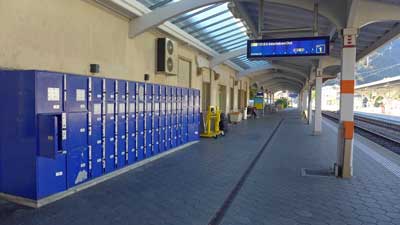
If you buy the Saver Day Pass at least 21 days in advance (and up to 60 days in advance) the 2023 cost is:
- 2nd Class (with Half Fare Card): CHF29
- 1st Class (with Half Fare Card): CHF82
- 2nd Class (with no Half Fare Card): CHF52
- 1st Class (with no Half Fare Card): CHF97
Once you research the normal cost of Swiss train fares you’ll see that the above prices are a very good deal for anyone riding more than 150 kilometers or so in a day. If you are just going, for example, from Zurich to Lucerne or Interlaken on a day, it’ll be cheaper to just buy that ticket individually. But if you are going from Geneva or Montreux to Interlaken or Lucerne then the Saver Day Pass will be much cheaper. Better still, you can use a Saver Day Pass to go from Interlaken to Geneva and back on the same day on the Goldenpass line and returning on the faster train through Bern, and it will still all be included for free.
If you don’t buy a Saver Day Pass at least 14 days in advance it’s more expensive, and if you only buy 1 to 3 days in advance it’s VERY expensive, so the key is to buy early. This is all confusing, but the Saver Day Pass should be a great option for many people only in Switzerland for one to three days.
Popular Swiss panorama scenic trains
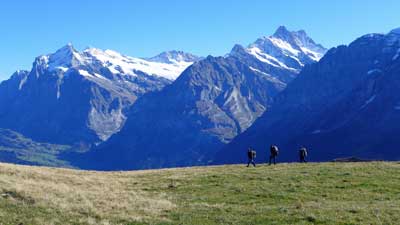
- Glacier Express
- Route: Zermatt to St. Moritz
- Train type: Panorama
- Journey time: 8 hours 3 minutes
- Distance: 291km
- 1st Class fare: CHF272
- 2nd Class fare: CHF159
- Compulsory seat reservation fee: CHF44 or 49
- Supplement for Swiss Pass holders: 13 to 33 for panorama carriage
- Bernina Express
- Route: Chur to Tirano and Lugano
- Train type: Panorama and bus
- Journey time: 4 hours 13 minutes and 3 hours 10 minutes
- Distance: 148km and 90km
- 1st Class fare: CHF113
- 2nd Class fare: CHF66
- Compulsory seat reservation fee: CHF32
- Supplement for Swiss Pass holders: 10 to 14 for panorama carriage
- GoldenPass Line
- Route: Lucerne to Montreaux
- Train type: Panorama
- Journey time: 5 hours 8 minutes
- Distance: 191 km
- Prestige Class fare: CHF131
- 1st Class fare: CHF96
- 2nd Class fare: CHF56
- Supplement for Swiss Pass holders: 8 to 15 for panorama carriage
- Gotthard Panorama Express (formerly Wilhelm Tell Express)
- Route: Lugano or Locarno to Lucerne
- Train type: Panorama and boat
- Journey time: 5 hours 21 minutes
- Distance: 182 km
- 1st Class fare: CHF164
- 2nd Class fare: CHF135
- Supplement for Swiss Pass holders: 39 to 49 for panorama carriage
- Swiss Chocolate Train
- Route: Montreux to Broc round trip
- Train type: Panorama or First Class
- Journey time: X hours X minutes
- Distance: 82 km
- 1st Class fare: CHF99
- 2nd Class fare: 89
- Supplement for Swiss Pass holders: 39
Popular Swiss scenic and theme trains
The scenic trains below are also extremely popular as sightseeing journeys rather than just as transportation, but can be used as both.
- Jungfraujoch round trip
- Route: Interlaken to Jungfraujoch
- Train type: special mountain train
- Journey time: 4 hours 41 minutes, round trip, plus time on top
- Distance: 73 km
- 1st Class fare: N/A
- 2nd Class fare: CHF224
- Supplement for Swiss Pass holders: 147 (so, a saving of CHF77)
- Gornergrat Railway
- Route: Gornergrat Railway
- Train type: Cog railway
- Journey time: 44 minutes return
- Distance: 10 km
- 1st Class fare: N/A
- 2nd Class fare: CHF90
- Supplement for Swiss Pass holders: 45
- Rigi round trip
- Route: Lucerne to Rigi
- Train type: Cog railway
- Journey time: 3 hours 25 minutes, plus time at the top
- Distance: 58 km
- 2nd Class fare: CHF78
- Supplement for Swiss Pass holders: None (this one is free with the pass)
- Mt Rigi Excursion (one-way and walk down)
- Route: Lucerne to Mt Rigi
- Train type: cogwheel train and/or cable car
- Journey time: 45 minutes up
- 1st Class fare: N/A
- 2nd Class fare: 49
- Supplement for Swiss Pass holders: 0
- Lotschberg Mountain Route and Centrovalli
- Route: Bern to Locarno
- Train type: Narrow gauge
- Journey time: 4 hours 40 minutes
- Distance: 212 km
- 1st Class fare: CHF158
- 2nd Class fare: CHF90
- Supplement for Swiss Pass holders: 5
- Jura round trip (Watchmaking Tour)
- Route: Neuchatel through Jura
- Train type: Regular
- Journey time: 3 hours 0 minutes
- Distance: 143 km
- 1st Class fare: CHF168
- 2nd Class fare: CHF108
- Supplement for Swiss Pass holders: 0
- Pre-Alpine Express
- Route: St. Gallen to Lucerne
- Train type: Regular
- Journey time: 2 hours 15 minutes
- Distance: 146 km
- 1st Class fare: CHF83
- 2nd Class fare: CHF47
- Supplement for Swiss Pass holders: 0
- Jura Foot Line
- Route: Basel to Geneva
- Train type: Regular
- Journey time: 2 hours 40 minutes
- Distance: 248 km
- 1st Class fare: CHF132
- 2nd Class fare: CHF75
- Supplement for Swiss Pass holders: 0
Popular Switzerland cable car rides
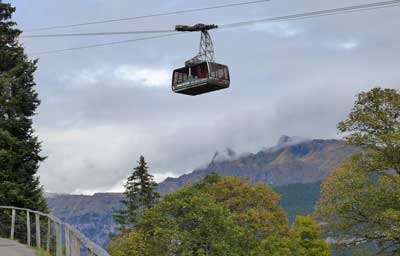
- Schilthorn
- Route: Stechelberg (Lauterbrunnen) to Schilthorn
- Train type: cable car
- Journey time: 1 hour
- 2nd Class fare: CHF108
- Supplement for Swiss Pass holders: 54
- Engelberg to Mt. Titlis cable car
- Route: Engelberg to Mt. Titlis
- Train type: cable car
- 2nd Class fare: CHF96
- Supplement for Swiss Pass holders: 46
The Swiss Travel Pass also includes free museum admission, but…
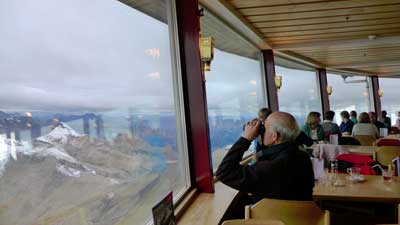
The problem is that the museums are only free on valid travel days, and almost no one would visit more than one or two museums with a Swiss Travel Pass. The trains and cable cars are so expensive that the pass gives very good value to cover those, so you don’t want to waste precious sightseeing time walking through a museum that only costs CHF10 anyway.
In other words, calculate the value of a Swiss Travel Pass on the travel savings only, and if you visit a museum here or there, then great. Most people are better off trying to squeeze in an additional train ride each day, and ignoring the museums. Switzerland is all about the outdoor scenery. As nice as the museums may be, they are not why you are there.
The pass includes free public transport in most Swiss cities
Similar to the free museum part of the offer, it’s best to ignore or minimize the value of free public transportation. It could be helpful in Zurich, but in most other Swiss tourist towns you won’t need much public transport. In fact, in Interlaken, each hotel or hostel guest automatically gets a card for free public transportation within the town (including between the two train stations).
So you might use a ride or two each day on public transport, but that won’t add up to much in terms of value of your Swiss Travel Pass.

Thank you for this very informative article. Looks like individual tickets would be best for the below:
Day 1: Zurich to Lucerne (evening)
Day 2: Mt Rigi or Pilatus (morning/afternoon), explore Lucerne (evening)
Day 3: Lucerne to Murren (morning), Schlithorn (afternoon)
Day 4: Jungfraujoch (morning/afternoon if weather ok), Murren to Zurich (evening)
Would you recommend the half fare card? Any changes you might make?
K,
This itinerary looks pretty much perfect for a 4-day visit to Switzerland. Now we just have to hope that the weather is decent at those key times when you are going up mountains, and it’s also nice to see that you are already considering that part.
From the looks of it, the Half Fare Card would be the best deal for you, especially with a Jungfraujoch trip scheduled. Have a wonderful trip. -Roger
Hi Roger,
Very informative info, not onky in your blog but also in comments and your replies. We are a family of 4 with 2 kids Age 6 and 3.We are coming to SWITZERLAND on 2nd June. Will stay for 5 nights i CHAM (Zug) and then 4 nights in lausanne.
3rd June Lucerne
4th June Zurich or Bern which one you recommend?
5th June Interlaken Mt titlis
6th June Engelberg.
7th June laussane
8th june Laussane to Jungrfroujuch
9th June Montreux
10th June visiting friends.
11th june depart to paris
Please let me know if I should take half fare card or 8 day swiss pass given the kids and my base locations.
Also If I should add any major attraction / train ride which I am missing without adding too much travel.
Thanks in advance
Regards
Ashish
Ashish,
Between Zurich (the largest city) and Bern (the capital), I’d say that Bern is more interesting for a day trip. It’s much nicer looking and it’s also pleasantly compact. It’s also a bit cheaper than Zurich.
I’d say the Half Fare Card for the adults will be your best bet. The kids can travel free with you, although you may need to get one of those free Swiss Family Passes. Since you get a 50% discount on Jungfraujoch compared to only 25% with a Swiss Travel Pass, and you don’t seem to be doing too many of the longer scenic trips, I think you’ll save more with the Half Fare Card. And it looks like you’ve got many of the top highlights scheduled for your trip. If you have time for Schilthorn I’d recommend that, and you’ll have some free time on some of your other days, but you’ll find great hikes or other things to do once you get there. Have a great trip. -Roger
Tkank you very much for responses !
For answer number 2: I want to go from Luzern to Locarno with Gotthard Panorama Express, but for return I want to use the train. Is there any option not to pay any extra money ?
For answer number 5: How long before can I make reservations for scenic rutes?
Thank you again ! You are very helpful to tourists !
Cristian,
It looks like you can get from Locarno to Lucerne on included trains with one change in Bellinzona, and it takes a bit over two hours.
I’m not sure when you can make reservations for the panorama carriages, but I’m guessing it’s one month out. Switzerland only puts their train tickets on sale 30 days in advance, and most of them are the same price no matter when you buy. Have a wonderful trip. -Roger
Hi Roger,
Your article is one of the best i have read so far with regards to info about Switzerland. and the Question Answer section is also particularly helpful for someone with confusion about planning their trip.
I too, just like many of them have a lot of confusion about vacationing in Switzerland. Wife and I are travelling last 10 days of July 2017. We live in dubai. We plan to make paris as our port of entry, stay in paris for 3-4 days, fly to switzerland where we would spend the next 3-4 days, and finally fly into barcelona and spend the last 3-4 days there. from there we will fly back to dubai.
1) would you recommend flying between all the above paris-swiss-barcelona, as it may be faster and cheaper??
2) if you suggest flying, coming from Paris into switzerland, should we land in zurich and travel to the place we intend to spend our days.
While reading the question/answers above, i saw one particular itinerary(by Zhi Hao) which suited our plan and preference.
By Zhi Hao
“Day 1 – Zurich airport – Interlaken Ost
Day 2 – Interlaken Ost – Murren – Gimmelwald – Lauterbrunnen – Interlaken
Day 3 – Interlaken Ost – Jungfraujoch – Interlaken Ost
Day 4 – Interlaken Ost – Lucerne
Day 5 – Lucerne- Zurich airport”
Of course we have slightly lesser time for the above itinerary, so may need to cut out some portion of it. Would it be possible for you to help with that. We are interested in seeing, interlaken, lucerne, add a short side trip to Lauterbrunnen, Grindelwald, Wengen or Mürren. This is something i am not able to decide. And we do not want to do Jungfraujoch as we know it is quite expensive. You had mentioned the Schilthorn as another option(cheaper and closer to the locations which we intend to go to). And I believe travel pass is not suited for our requirements??? Shall we just buy tickets as we go from one place to another.
Please Please Please help us plan an itinerary for 3-4 days, and also the mode of transport to move to our next destination – Barcelona.
We would be really grateful for all your suggestions.
Best
Ankit Datta
Ankit,
I’m happy that people find this helpful.
1) I’d take the train from Paris to Interlaken and then fly to Barcelona. The train takes 6 hours. The first few hours in France are nice for scenery, but those last few hours in Switzerland are amazing. It should be faster than flying to Zurich and taking the train from there as well. Buy your ticket online as early as possible for the lowest fares.
Switzerland to Barcelona is too long of a train ride, so flying from Zurich will be best.
I don’t normally like to type out itineraries for people, but I think the itinerary you are looking at is a good place to start. If you can stay in Switzerland for 4 nights it would be best, and do Barcelona in 3 nights, which will be enough to see the highlights.
Jungfraujoch is indeed expensive (normal price is around US$200 return from Interlaken), but Schilthorn is a bit over half that and it’s also amazing, so I’d highly recommend it. If you spend 3 nights in Interlaken and 1 night in Lucerne, you’ll have enough time to see and do all the things on your list.
A Swiss Travel Pass won’t be good value for you, but the Half Fare Card mentioned in the article really should be. Basically you spend about US$120 per person and get a 50% discount on everything, including Schilthorn. Almost everything in Switzerland feels quite expensive, so once you pay that first US$120 for the Half Fare Card, then suddenly things seem quite reasonable. It’s also nice because there are so many great cable car rides and cogwheel trains in the Interlaken and Lucerne areas, and at 50% off the normal price you’ll be able to do several of them. Let me know if you have any other questions. -Roger
Roger,
I am sure this has been answered but here goes..
We are traveling to Switzerland at the end of September 23-30 and will be flying into Milan. We would like to do Lake como/Lugano for a day or so and then head to Luzern for a day or so, then make our way to Interlaken area for 3 days and stay in either Murren or Grindelwald, maybe Montreux and then back to Lugano or Milan to catch our flight. I am debating whether or not to get a 4 day Swiss Pass and use it to its full advantage, or just buy point to point tickets and perhaps get lucky and get super saver tickets. We would not do anything that costs extra once we bought the pass though as we have a limited budget. We are going to Norway this summer. 🙂 I welcome your advice. We are a family of 4, kids 15 and 18. Or should we just rent a car is another question?
Thank you
Nadine,
Your plan sounds quite good as long as the kids don’t mind spending that much time on the trains. The views are amazing so that will keep them occupied for quite some time, but not all people that age have as much patience as older folks for scenery. You might check for some upcoming dates in the next month to see if Super Saver tickets are offered. In my experience, they are rarely offered for the most popular and scenic trains like the ones you have in mind. So if you can afford the Swiss Travel Pass, it will probably save you quite a bit of money.
Also, the Half Fare Card would definitely be cheaper than just buying all of those tickets, unless you were to somehow get incredibly lucky and find Super Savers. Let me know if you have any other questions. -Roger
Hi Roger,
I have some questions about Swiss Travel Card:
• How do I use the Swiss Travel Card ?
Can I get on the train directly ? Or do I have to inform at the train station office that I have to pay?
• I looked at the map for the Swiss Travel Pass and I saw that the journey from Locarno to Luzern is not entirely covered by this card. It is a variant of this trip for which I do not have to pay if I have a swiss travel card?
• Is it necessary to pay a reservation for usual routes ? For example: from Geneva to Luzern.
• Can I buy a Swiss Travel Tard from Geneva Airport?
• If I buy the Swiss Travel Card from Switzerland, can I book ahead online for scenic routes ?
Thanks for help,
Cristian
Cristian,
I’ll try to answer in order…
1. They mail you or you pick the card up in person, and you have to validate it with your passport each time you use it. For most trains in Switzerland you can just climb on board and show them the Pass when the conductor comes by looking at tickets. They’ll check that it’s valid, and then stamp that day if you haven’t used it yet. It sounds confusing but it’s really easy once you start. For the special scenic trains you have to pay a small supplement for a seat reservation in the panorama carriages, since there are only a few of them per day and they often sell out.
2. The route you are describing is part of the Gotthard Panorama Express, which used to be called the Wilhelm Tell Express. Part of it is covered by a boat ride, which is also covered by the Swiss Travel Pass, and it’s mentioned in the article above. You have to pay a supplement of CHF39 to CHF49 for a seat in one of the panoramic carriages.
3. Most trains in Switzerland don’t require a seat reservation, although some of the intercity trains do offer them. You might want a reservation if you are going between big cities in the early morning or late afternoon. Check the timetables on sbb.ch and it should tell you whether you need or want a reservation or not.
4. Yes, I believe you’ll be able to buy a Swiss Travel Pass at the train station at the Geneva Airport. But I believe they sell them from the service desk, which has limited hours, as opposed to the main ticket windows, which are open almost around the clock.
5. You can’t reserve the panorama seats until you buy the Swiss Travel Pass. So you can do it once you get there, but some might be sold out (this often happens). It’s probably better to buy online and start booking soon. Have a great trip. -Roger
Hi Roger
Thanks very much for the information, It is very kind of you 🙂
Kristal
Hi Roger,
Please give me your advice for my family ( two adults and one child – 15 years old ), please. Our visit in Switzerland is for 10 nights. Our train itinerary will be:
-Day 1 Geneva Airport to Lucerne
-Day 2 Lucerne – trip to Mount Pilatus ( Golden Round Trip ).
-Day 3 Lucerne to Rhine Fall
Rhine Fall – Bern or Zurich
Bern or Zurich – Luzern
-Day 4 Lucerne-Locarno: Lucerne to Flüelen by boat, Flüelen to Bellinzona by train – both with Gotthard Panorama Express
Locarno – Luzern – return with regional train
-Day 5 Luzern – Interlaken
-Day 6 Interlaken trip to Jungfraujoch
-Day 7 Interlaken trip to Zermatt and Klein Matterhorn and return
-Day 8 Interlaken to Geneva
-Day 9 – Geneva trip to Lausanne or Montreux – by boat and return by train
-Day 10 – Geneva to CERN
It is ok to get the 15 days Swiss Travel Pass or the Swiss Half Fare Card for a month ? Or maybe it is another solution for more discounts ?
Thanks!
Ancuta,
This looks like a wonderful trip. You’ve got quite a few longer train rides planned, so my best guess is that the Swiss Travel Pass for 15 Days would save you more money. The Half Fare Card would also be great, but I think the main travel pass would save you more with train rides like Interlaken to Zermatt and back on the same day. You could check the fares on sbb.ch and check yourself because it could be close, but my hunch is the Swiss Travel Pass will save you the most. Have a great trip. -Roger
Hello Roger from bottom of the world, New Zealand, me and my husband going self drive from Germany to Zurich in Aug 2017 . We have last two nights at Zurich before heading back home and wanted to visit the Jungfraujoch for a day trip, could you please kindly advise below one day trip would works?
Zurich – Kleine Scheidegg
Kleine Scheidegg to Jungfraujoch
Jungfraujoch to Kleine Scheidegg
Kleine Scheidegg to Zurich
also does the railway ticket between Kleine Scheidegg to Jungfraujoch have to purchase advance online? what the chance for getting the ticket on the spot on the day?
Lastly, parking. what’s parking situation like in Kleine Scheidegg ?
Thanks in advance , Kristal
Kristal,
I really only know Kleine Scheidegg as one of the stops on the way up to Jungfraujoch. I assume there is parking, but I’m not sure since I tend to be focused on trains for those journeys.
From Zurich the train to Kleine Scheidegg takes a bit over 3 hours. From there you can obviously catch the special train that goes on up to Jungfraujoch. The other thing to be aware of is that the summer is actually the wet season in the Alps, but the good news is that the storms tend to come and go quickly. You can get fog or clouds in those peak areas, and if the clouds are thick at the moment it’s not really worth going up there. But often a few hours later it’s clear again, so most savvy travelers wait until they are there before they commit. In other words, it’s usually easy to get tickets on the spot, and the price is the same.
The worst case scenario is that it’s very cloudy up top all day when you are going. Even when that happens you’ll still usually have clear-enough weather in Kleine Scheidegg or Grindelwald or Wengen or Lauterbrunnen or Gimmelwald, and you can have a great time on some of the hikes from those places. The second worst case scenario would be if it was really cloudy for a couple days before you got there, and suddenly it’s sunny so everyone else in the area gets there at the same time. All in all, it’s a bit of a gamble, and since it’s so expensive to take the train up to Jungfraujoch, it’s really better to wait until you get there. Best of luck with it all. -Roger
Roger,
Thank you for all the information. These posts are SO helpful. My friend and I are flying into Zurich but don’t feel a real need to stay/explore there. We have about 8 full days, and were planning to spend most of our time in Interlaken/ Gimmelwald, maybe Lucerne and Bern, and potentially spend a couple days in the Alsace Region of France. We will need to travel by train between Zurich, Lucerne, Interlaken, Bern, Basel, and France if we take a few days there. What would be the best option for us? I don’t know much about all the scenic routes, but I know we definitely want to do Jungfraujoch. Our goal is to stay near natural beauty and outdoor activities (we will be going end of June). Additionally, are the trains between major cities (that sound like they are free/included with the Swiss Travel Pass) scenic on their own? We are both under 25 so the swiss travel pass will be on the cheaper end for us. Lastly, is traveling 2nd class sufficient or is there a substantial advantage/ benefit to first class?
Thank you again! I hope that was not too many questions.
Logan,
I’m happy to help. I’ll answer your questions in the order they came up…
Based on your list, I’d say it’s a toss-up between the Swiss Travel Pass, which will cover most of your train trips (but only a 25% discount on Jungfraujoch), or the Half Fare Card, which gives you a 50% discount on everything. If you use it for the 50% off Jungfraujoch, it almost pays for the CHF120 that the Half Fare Card costs for 30 days.
I think your goal is perfect for Switzerland. I’d probably recommend no more than 2 nights in Gimmelwald. It’s an amazing little farming village and an incredible place to spend a couple nights, but it’s really tiny and after a couple days I think you’d find Murren or Interlaken to be more interesting.
Most of the trains in Switzerland are very scenic, so I don’t think it’s necessary to focus on just the official “Scenic trains” that they promote. The trains between Basel and Zurich are nice, but not mind-blowing. And some of the trains immediately around Zurich go through tunnels and through suburbs. Just about every other train in Switzerland is very scenic. Even the train from Geneva to Lausanne to Montreux is wonderful as it goes along Lake Geneva.
For most people, traveling Second Class is all they need. In Second Class it’s 4 seats across, but even then the seats are larger than on planes in coach, and you get much more legroom as well. I’m 6’3″ (192cm) and I’m fine in Second Class for the most part. First Class is mostly 3 seats across with even more legroom. It’s nice for sure, but it’s mostly built for business travelers who are trying to work during the trip and that sort of thing. Aside from the larger seats and more legroom, the other main advantage of First Class is that it’s often half empty, even when Second Class is almost full. Depending on the route, there might be 30 First Class seats and 300 Second Class seats, but still First Class is half empty even if Second Class is full.
That said, the only trains you have to worry about filling up like that are on Monday morning and Friday afternoon, or any other train that somehow attracts many business travelers. I usually take trains that leave at 10am to 11am, and those are usually mostly empty. Let me know if you have any other questions. -Roger